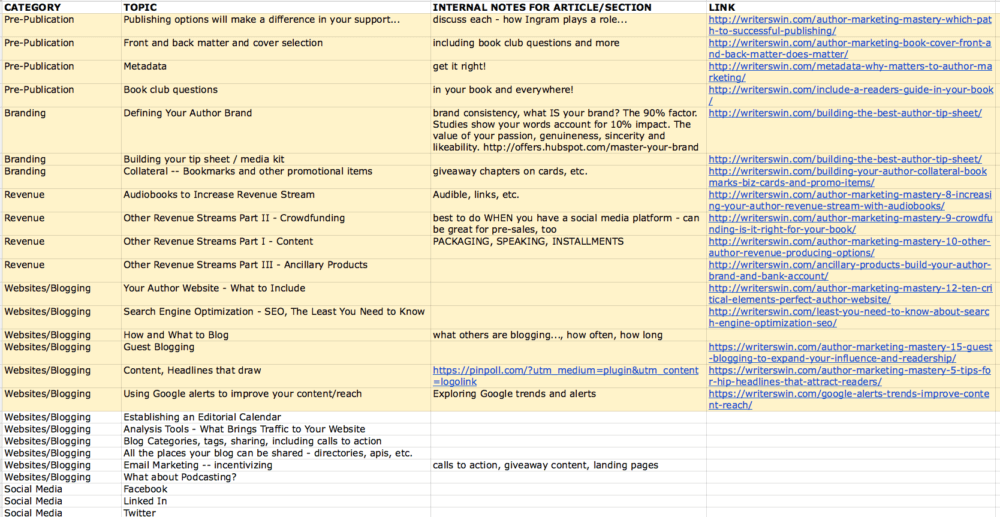 Your website is up and running; you’re ready to blog, host guest blogs, write guest posts. And now it’s all beginning to feel a bit overwhelming. “Feeding the beast” to provide new content on a regular basis can become a chore, and no writer needs another chore, right?
Your website is up and running; you’re ready to blog, host guest blogs, write guest posts. And now it’s all beginning to feel a bit overwhelming. “Feeding the beast” to provide new content on a regular basis can become a chore, and no writer needs another chore, right?
So, how do we avoid being up at 3 a.m. on Saturday night, pounding our heads against the wall, trying to come up with an idea for a post that’s supposed to release at 8 a.m. the next morning?
As the cliche foretells: An ounce of prevention is worth a pound of cure.
And in this case that ounce of prevention is taking the time to establish an editorial blog calendar. Just like days of menus for a dieter, or establishing a budget or marketing plan, or even outlining a book, a blog calendar can give our online content focus and direction.
Here are a few steps to put you firmly on the path of organized, quality blog content!
- Pick Your Poison: You may have more than one blog category; that’s fine. But begin with one subject in mind that you think you can write a dozen or more articles about. Example: We talk about Facebook, Pinterest, LinkedIn, etc. That’s part of the greater subject category, Author Social Media.
- Brainstorm: If you’re blogging once a month, brainstorm 15-20 possible article titles about the subject (because you’ll likely discard a few). Blogging weekly? Try to come up with 60 ideas. This is where the serious planning comes in that will pay off in the long run, so take your time with this step. Use online resources such as Google alerts and trends to come up with topic ideas. In our case, we decided on this author marketing series, so we sat around for a day coming up with 60 topic ideas.
- Plug ’em in: Now look at your calendar for the next year, comparing it to your topics. Does one play better towards winter holidays? Does one kick off summer in a smart way, or tie into your book tour or a conference you’re attending? Below are several templates you can use, or create one of your own. Move topics around on the puzzle board until all the “pieces” fall into place.
- Keep your newly created calendar nearby. As you run into alerts or articles that may flesh out one of your topics, add it to notes beside the topic. Your blog editorial calendar is a living, breathing document. If one of your article ideas becomes obsolete, replace it with another of your ideas you keep on a “reserve” list.
- Don’t forget to track and share! Once you blog that topic, put the finished link of the post into your calendar so you remember to share it!
 Once we determined our 52 weeks of author marketing strategies, we organized them by earliest preparation to post-publication. As we run into cool articles, we put the links or resources next to that topic in a Google doc. We reserve our mid-week blog posts for new, topical info and guest bloggers.
Once we determined our 52 weeks of author marketing strategies, we organized them by earliest preparation to post-publication. As we run into cool articles, we put the links or resources next to that topic in a Google doc. We reserve our mid-week blog posts for new, topical info and guest bloggers.
Visit the resources below, start some planning, and let us know how your calendar development is coming along!
Additional Resources
- How to Create an Editorial Calendar for your Blog
- How To Boost Success With A Content Marketing Editorial Calendar
- 3 Tools to Better Manage Your Blogging Editorial Calendar
 Happy Birthday, WWW!
Happy Birthday, WWW!
Today is our official fourth birthday. We launched our site on May 1, 2012. This is our 655th blog post… Not all of them were planned in advance, but we’re getting better!
